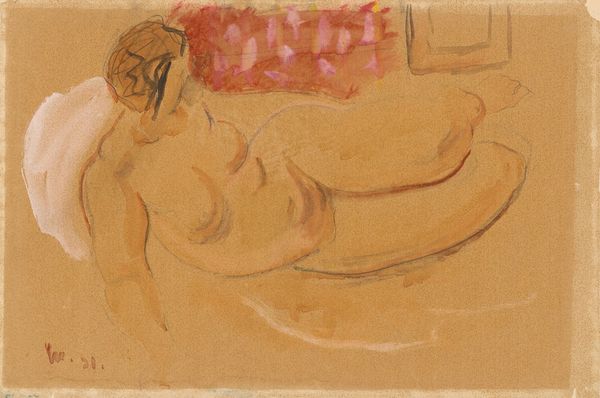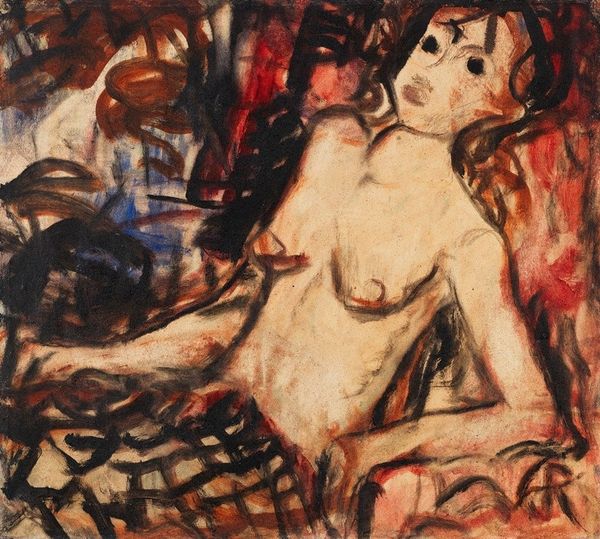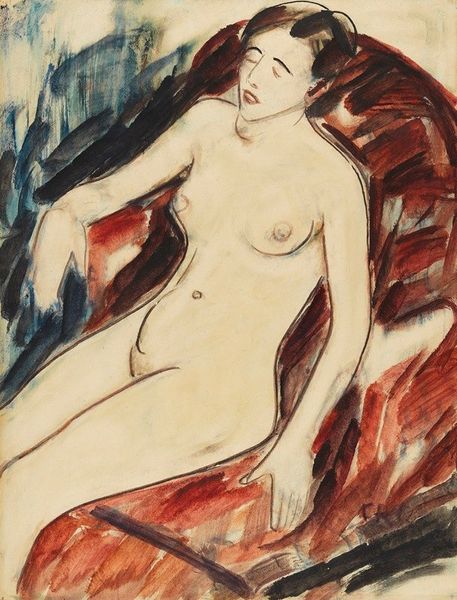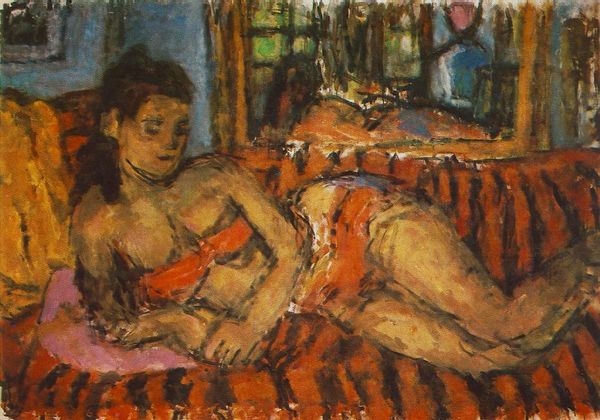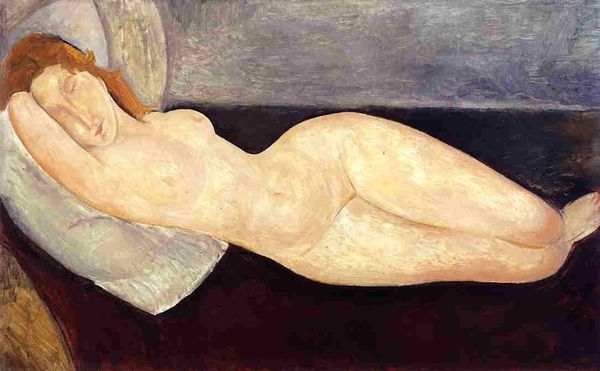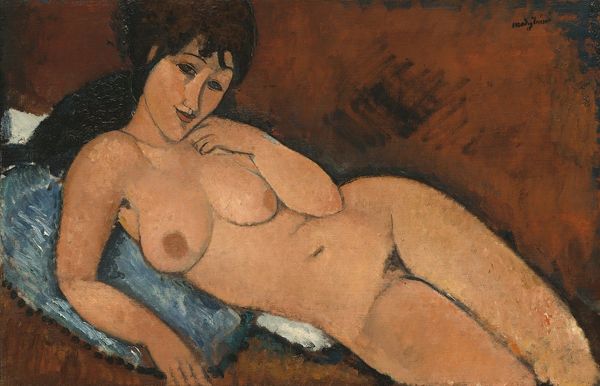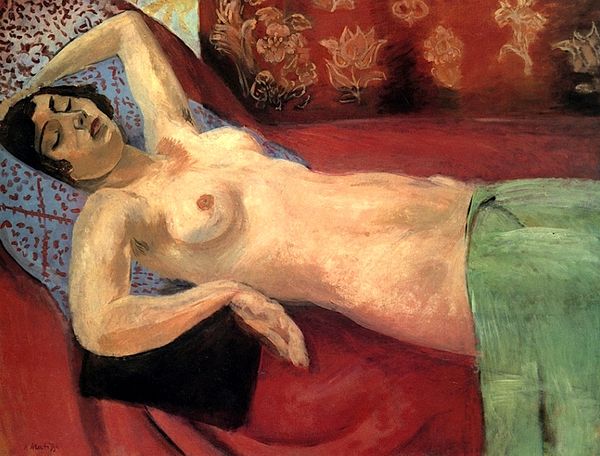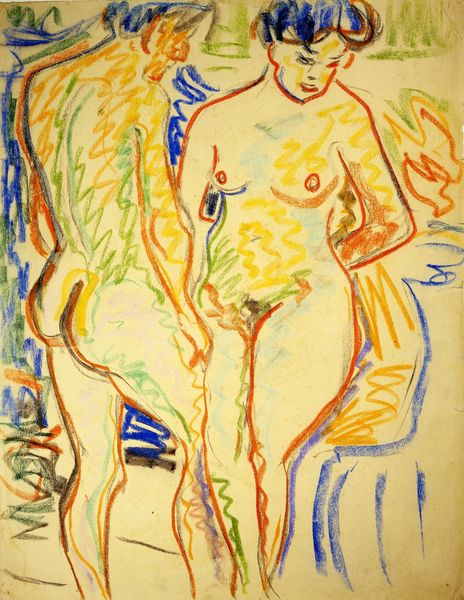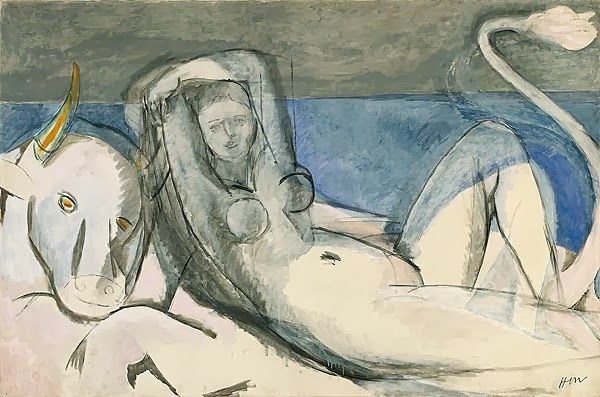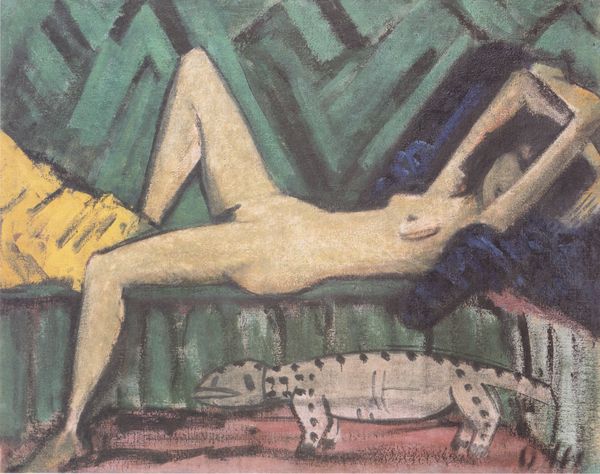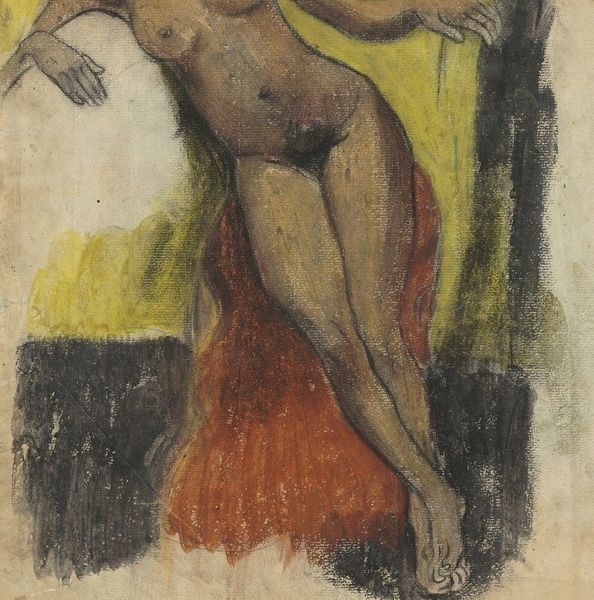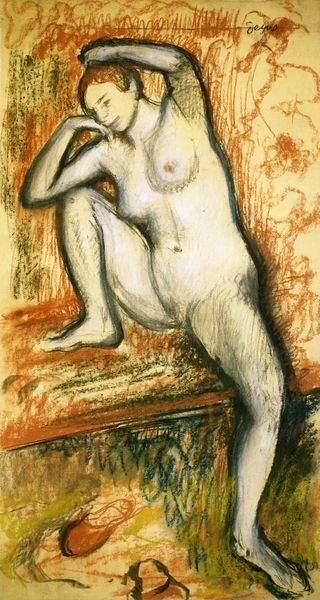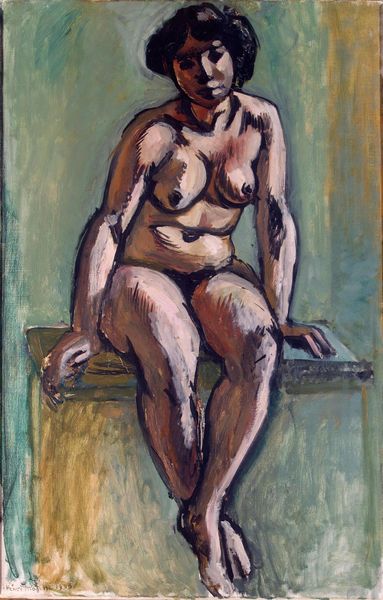
#
figurative
#
abstract expressionism
#
abstract painting
#
possibly oil pastel
#
oil painting
#
fluid art
#
acrylic on canvas
#
street graffiti
#
paint stroke
#
painting painterly
#
expressionist
Copyright: Public Domain: Artvee
Editor: Christian Rohlfs' "Liegender Weiblicher Ruckenakt," painted in 1910, presents us with a reclining female nude. There's an incredible sense of fluidity and motion despite the subject being at rest. The heavy, dark outlines almost give it a stained-glass feel, wouldn't you agree? How do you interpret this work, especially considering the era it was created in? Curator: The early 20th century was indeed a time of great upheaval. I think what strikes me is how Rohlfs seems to be wrestling with tradition while hurtling towards modernism. You've nailed it – there *is* a stained-glass quality. It’s as if he’s taking the reverence typically reserved for religious figures and bestowing it on the human form. This intimacy—that gaze, even averted—that vulnerability... It hints at something profound beyond just simple representation, don’t you think? But tell me, does the boldness of the strokes – the almost brutal honesty of the lines – jar with that perceived reverence? Editor: That's a great question. I initially saw the boldness as expressive, but maybe you’re right, there's a jarring element too. Perhaps that's part of the modern sensibility, an uneasiness or friction. Curator: Exactly! It's in that very tension, I think, where the real conversation begins. Rohlfs invites us to witness a deeply personal encounter, filtered through his uniquely expressive lens. The almost feverish energy in those strokes, those bold colors… Editor: I’m starting to see it now - a tension between the classic nude and an almost anxious modern aesthetic. Thanks, I really got a lot more out of that than I expected! Curator: My pleasure! It’s the best thing when a piece of art surprises you, isn't it?
Comments
No comments
Be the first to comment and join the conversation on the ultimate creative platform.

